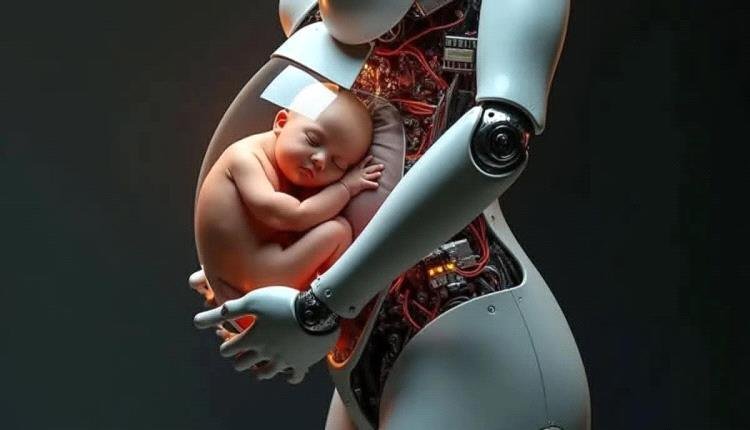China is set to unveil a groundbreaking innovation, a humanoid robot designed to achieve pregnancy by hosting a fully functioning artificial womb.
This work is pioneered by Kaiwa Technology in Guangzhou, slated for a 2026 debut, aims to revolutionize reproductive science.
Dr. Zhang Qifeng, the project lead, announced at the World Robot Conference in Beijing that the scientific foundation is already robust, with the next phase focusing on integrating the technology into a robot for interactive pregnancy.
Indeed, this ambitious project builds upon existing advancements in ex-utero gestation.
The concept of an artificial womb itself is not entirely novel; it is a sophisticated machine that replicates the uterus’s environment, complete with artificial amniotic fluid and a tube serving as an umbilical cord for nutrient and oxygen delivery.
For example, in 2017, US scientists successfully sustained premature lambs for weeks in similar ‘biobags,” demonstrating the feasibility of such systems.
What distinguishes Kaiwa Technology’s endeavor is its ambition: developing the robot to manage the entire gestation process, from fertilization to full-term birth.
Furthermore, this solution is projected to cost around 100,000 yuan (£11,000), significantly less than conventional human surrogacy options.
The impetus behind this rapid development stems from a surging infertility crisis, particularly in China.
In 2007, infertility affected nearly 12 percent of couples in China, a figure that escalated to 18 percent by 2020.
Millions of couples face disappointment despite undergoing costly IVF cycles and artificial insemination procedures.
Read also:
- US strikes deportation deals with Honduras, Uganda
- Elon Musk unveils AI Robot Chef that could replace human cooks forever
- Tesla recruits trainers for upcoming Humanoid Robot
In India, for instance, approximately 22 to 33 million couples of reproductive age struggle with lifetime infertility.
The prevalence of infertility in India was recorded at 18.7 per 1,000 women married for at least five years, according to National Family Health Survey-5 data from 2019-21.
This growing burden underscores a critical need for alternative reproductive solutions.
Proponents argue that a pregnancy robot could offer a viable path to parenthood, providing hope where traditional methods have failed.
Despite the potential benefits, the concept of outsourcing pregnancy to machines raises considerable ethical and societal concerns. Critics worry that such technology could profoundly fracture maternal bonds or distort traditional views of parenthood.
Prominent feminist thinkers have even suggested that widespread use of artificial wombs could signify “the end of women” by redefining female roles in reproduction.
Medical professionals also express uneasiness. Researchers at The Children’s Hospital of Philadelphia, for example, highlighted in 2022 that artificial wombs risk pathologizing pregnancy, transforming it from a natural biological process into a managed medical condition.
These discussions emphasize the need for careful consideration as technology advances.
Furthermore, the rapid pace of scientific progress often outstrips legal frameworks. Officials in Guangdong Province are already engaging with Kaiwa Technology to address regulatory challenges.
The promise of artificial wombs is undeniable; they could significantly alleviate the inherent dangers of biological pregnancy for women and offer parenthood to families previously excluded due to biological limitations.
Conversely, the risks are equally pronounced. Experts warn of the commodification of childbirth, potentially undermining fundamental human bonds and fundamentally shifting reproduction from a human experience to a machine-driven process.
The development of an artificial womb, therefore, represents a pivotal moment in human history, challenging our understanding of life, family, and society.






